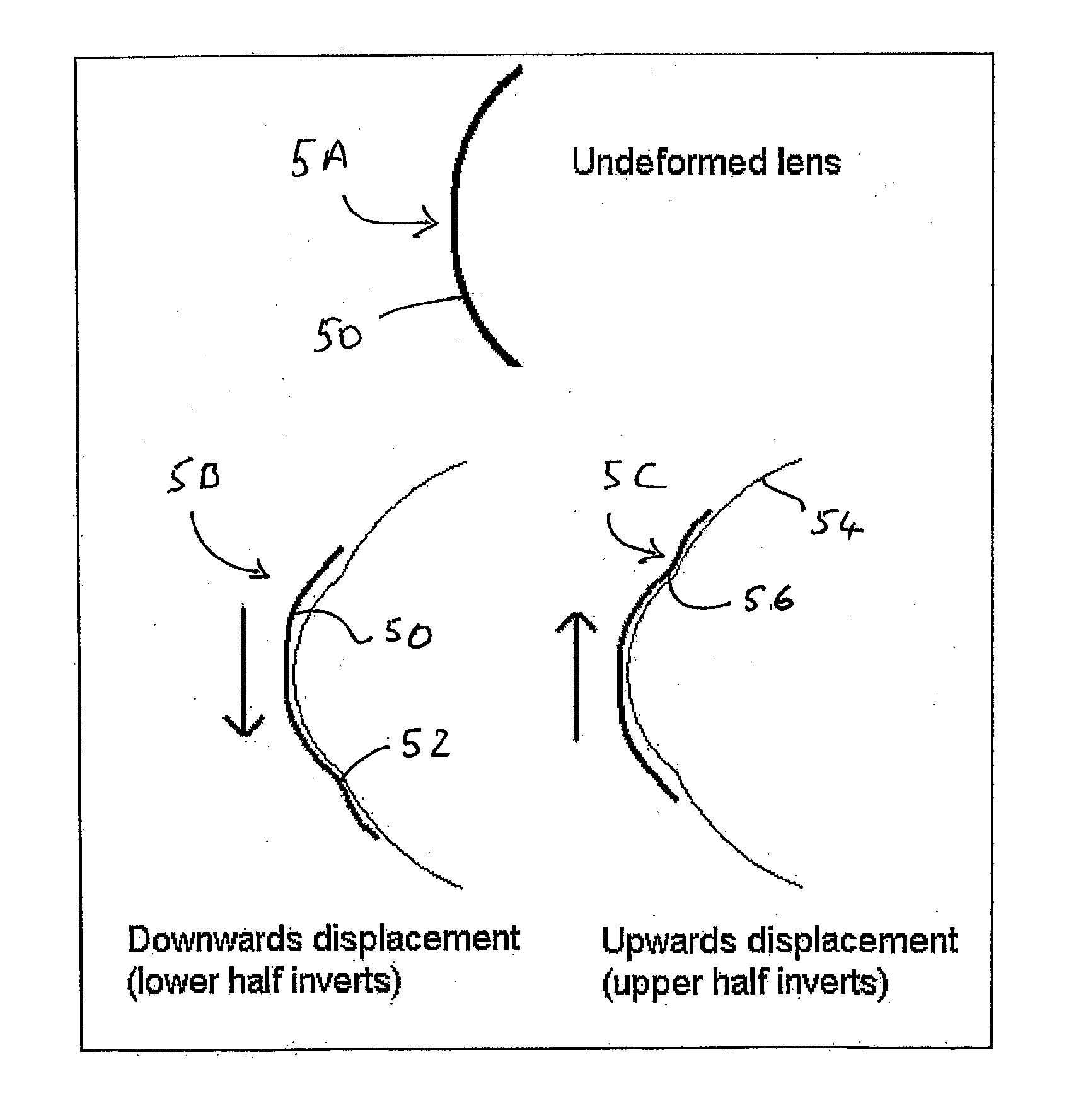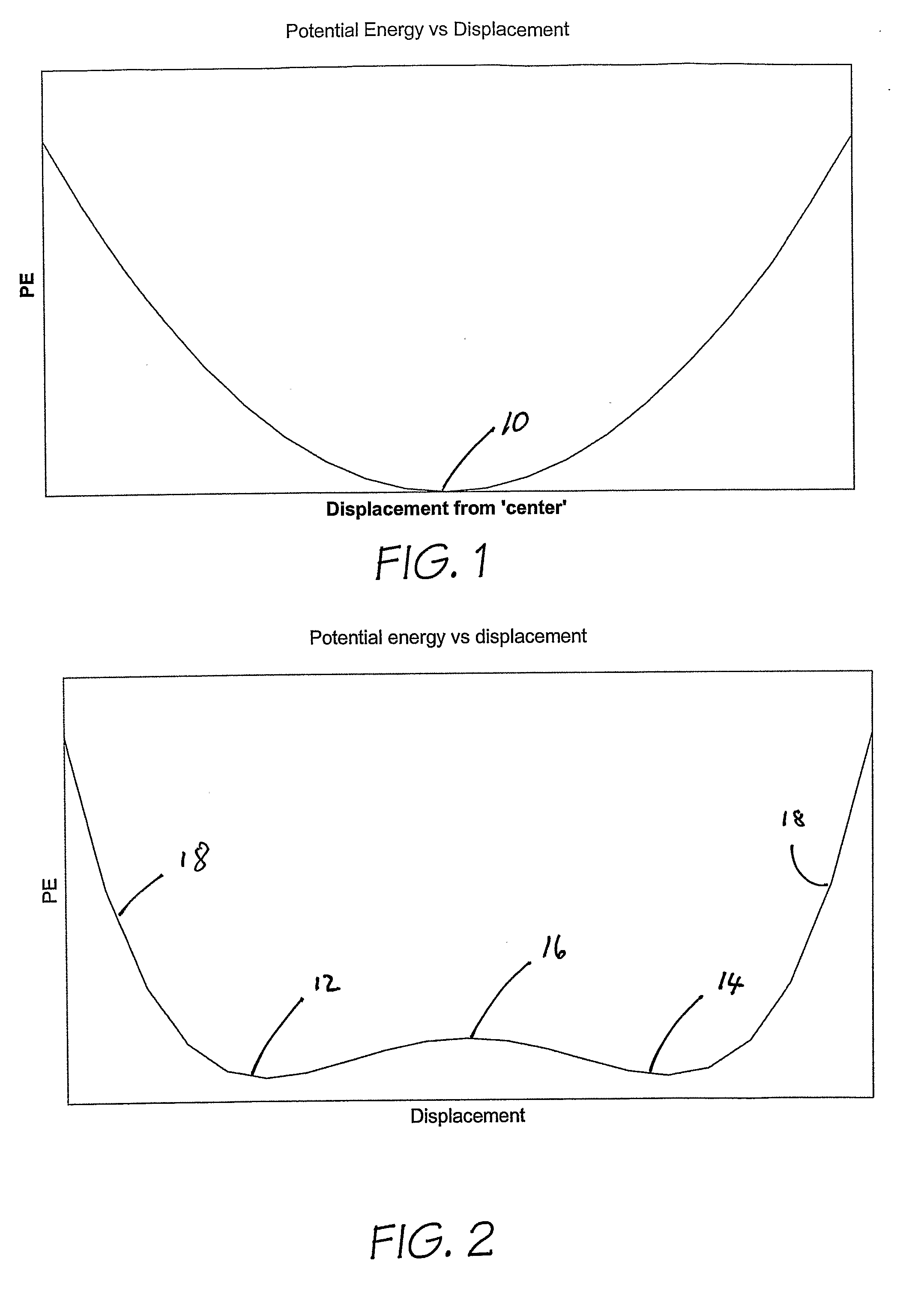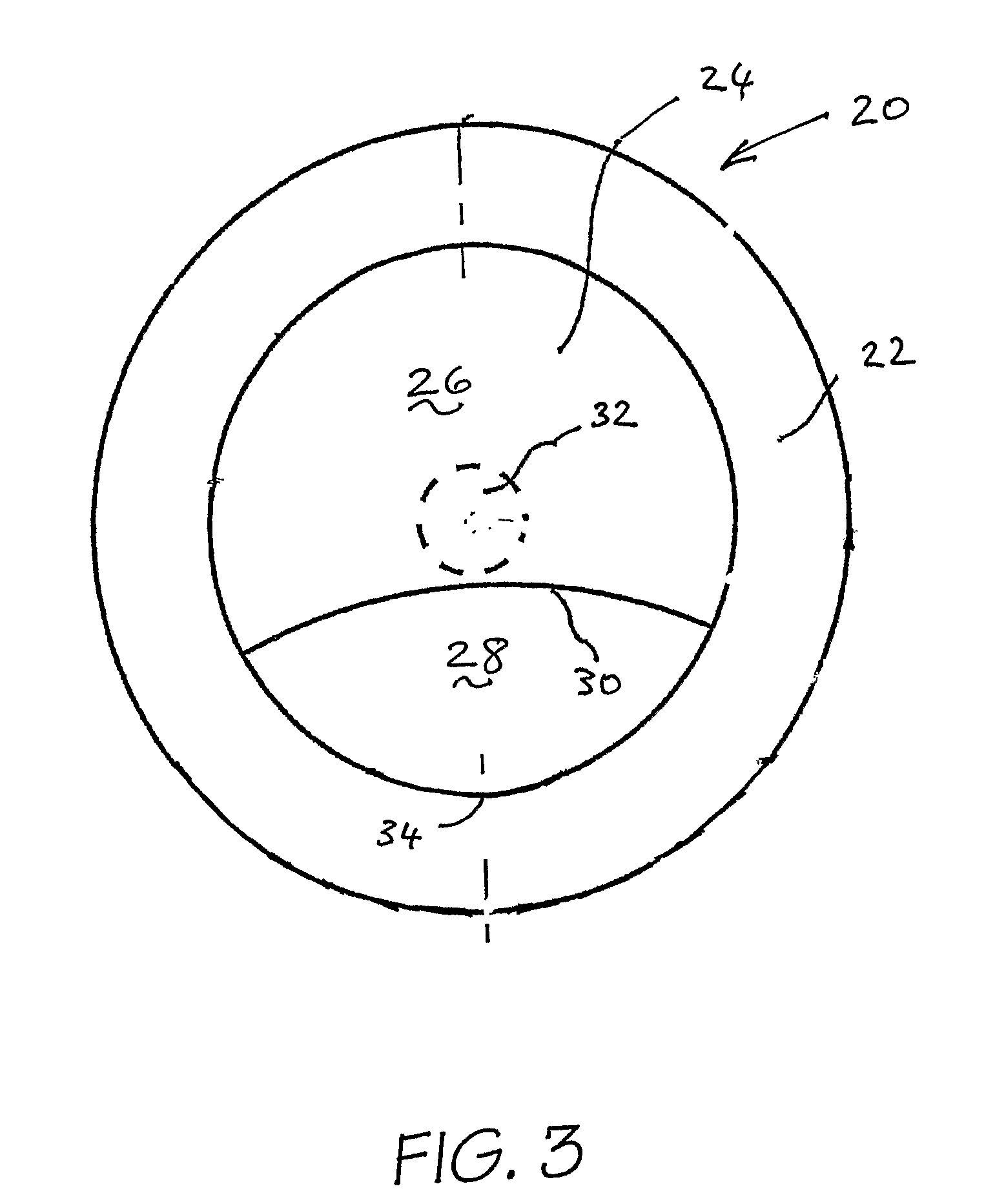Bifocal contact lens
- Summary
- Abstract
- Description
- Claims
- Application Information
AI Technical Summary
Benefits of technology
Problems solved by technology
Method used
Image
Examples
Embodiment Construction
[0034] Referring initially to FIG. 1, it will be noted that the central position of the lens on the eye, indicated at numeral 10 on the graph, is the minimum potential energy position. Movement of the lens away from that position, in either direction, will increase the potential energy of the lens, and accordingly some form of external force will be required to hold the lens in the higher potential energy position.
[0035]FIG. 2, on the other hand, depicts two low potential energy points on the graph, indicated at numerals 12 and 14. These two low energy points will, in accordance with the invention, correspond with the position of the lens on the eye which corresponds with optimal positions of the contact lens for near-viewing and distance-viewing. Optionally, one of those positions is at a lower potential energy than the other position, so that the lowest potential energy position becomes more stable, making it harder to inadvertently leave this position. For safety reasons it is i...
PUM
 Login to View More
Login to View More Abstract
Description
Claims
Application Information
 Login to View More
Login to View More - R&D
- Intellectual Property
- Life Sciences
- Materials
- Tech Scout
- Unparalleled Data Quality
- Higher Quality Content
- 60% Fewer Hallucinations
Browse by: Latest US Patents, China's latest patents, Technical Efficacy Thesaurus, Application Domain, Technology Topic, Popular Technical Reports.
© 2025 PatSnap. All rights reserved.Legal|Privacy policy|Modern Slavery Act Transparency Statement|Sitemap|About US| Contact US: help@patsnap.com



